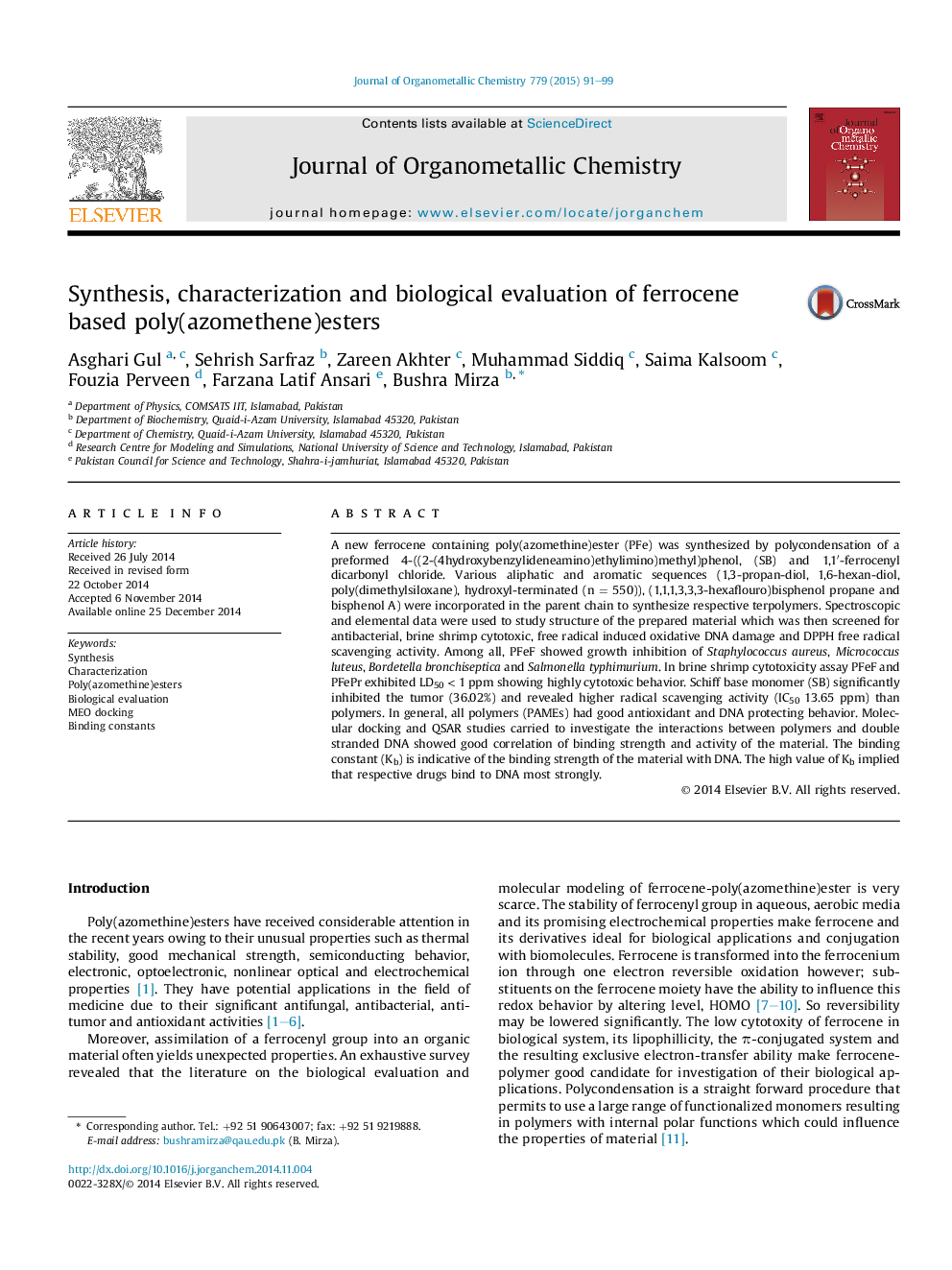| کد مقاله | کد نشریه | سال انتشار | مقاله انگلیسی | نسخه تمام متن |
|---|---|---|---|---|
| 1322154 | 1499863 | 2015 | 9 صفحه PDF | دانلود رایگان |

• Aromatic/aliphatic poly(azomethine)ester were synthesized and characterized successfully.
• Material was screened against standard biological assays.
• Polymers showed good antioxidant and DNA protecting behavior.
• Molecular docking was carried out to study the mode of interaction.
A new ferrocene containing poly(azomethine)ester (PFe) was synthesized by polycondensation of a preformed 4-((2-(4hydroxybenzylideneamino)ethylimino)methyl)phenol, (SB) and 1,1′-ferrocenyl dicarbonyl chloride. Various aliphatic and aromatic sequences (1,3-propan-diol, 1,6-hexan-diol, poly(dimethylsiloxane), hydroxyl-terminated (n = 550)), (1,1,1,3,3,3-hexaflouro)bisphenol propane and bisphenol A) were incorporated in the parent chain to synthesize respective terpolymers. Spectroscopic and elemental data were used to study structure of the prepared material which was then screened for antibacterial, brine shrimp cytotoxic, free radical induced oxidative DNA damage and DPPH free radical scavenging activity. Among all, PFeF showed growth inhibition of Staphylococcus aureus, Micrococcus luteus, Bordetella bronchiseptica and Salmonella typhimurium. In brine shrimp cytotoxicity assay PFeF and PFePr exhibited LD50 < 1 ppm showing highly cytotoxic behavior. Schiff base monomer (SB) significantly inhibited the tumor (36.02%) and revealed higher radical scavenging activity (IC50 13.65 ppm) than polymers. In general, all polymers (PAMEs) had good antioxidant and DNA protecting behavior. Molecular docking and QSAR studies carried to investigate the interactions between polymers and double stranded DNA showed good correlation of binding strength and activity of the material. The binding constant (Kb) is indicative of the binding strength of the material with DNA. The high value of Kb implied that respective drugs bind to DNA most strongly.
Molecular docked complex of PFeF (labeled yellow) with DNA.Figure optionsDownload as PowerPoint slide
Journal: Journal of Organometallic Chemistry - Volume 779, 1 March 2015, Pages 91–99